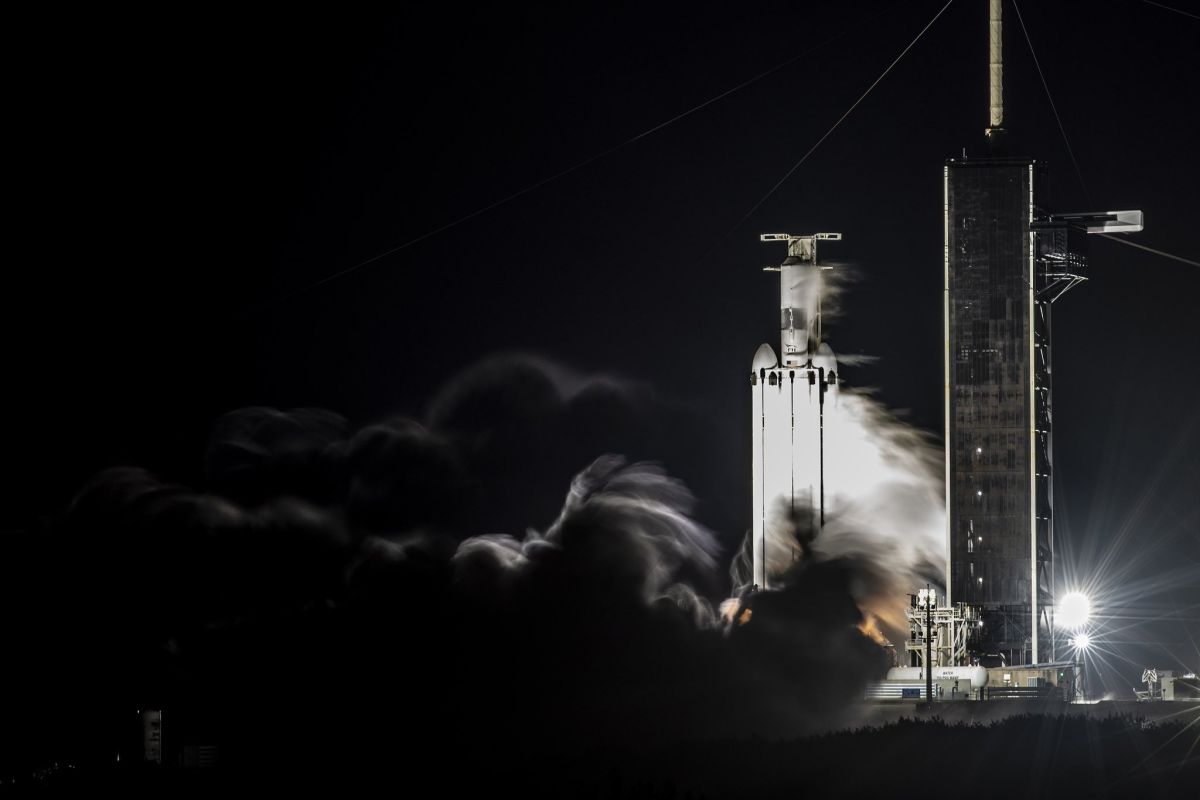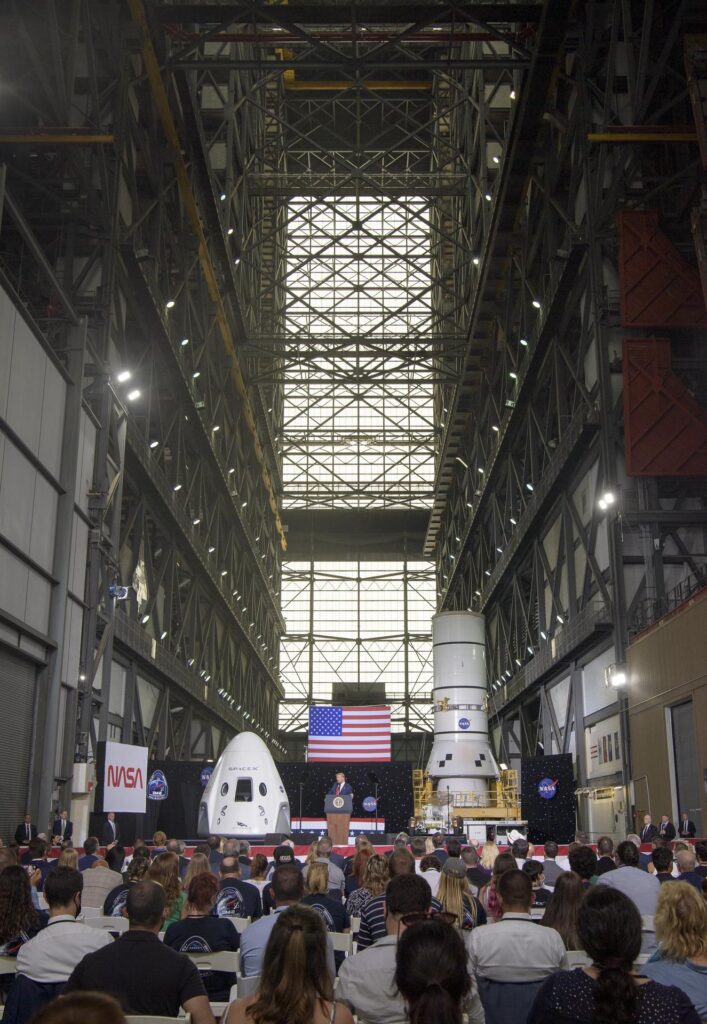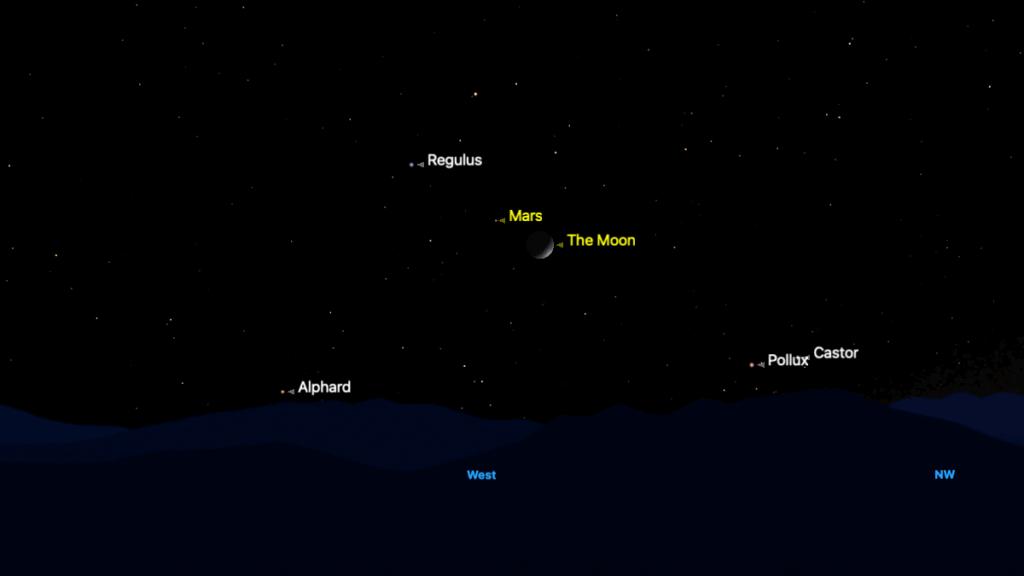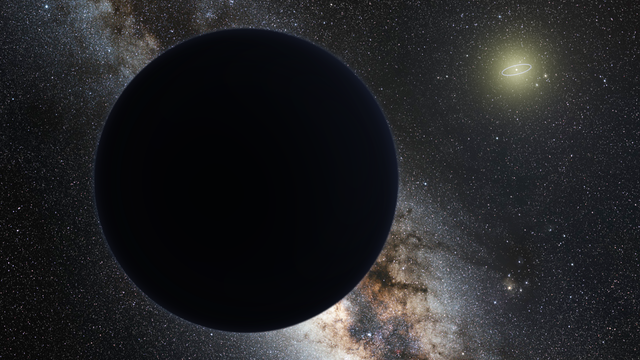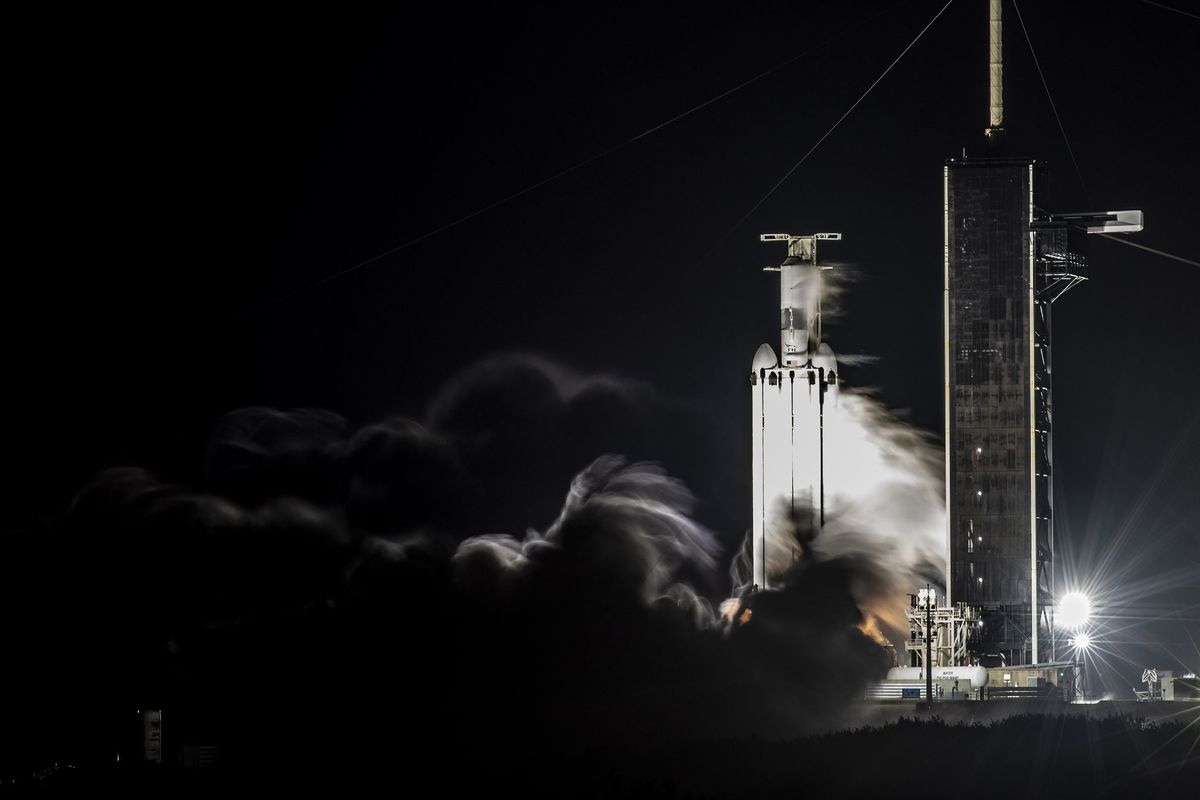
SpaceX’s triple-booster heavy lift vehicle is poised to take off for its fourth-ever launch on Tuesday (Nov. 1).
The mission, called USSF-44, was contracted by the U.S. Space Force and will launch two classified satellites into geostationary orbit atop a SpaceX Falcon Heavy rocket. Liftoff is expected on Tuesday from Launch Complex 39A at NASA’s Kennedy Space Center in Florida at 9:40 a.m. EDT (1340 GMT). You can watch it live here at Space.com, courtesy of SpaceX, or directly via the company.
USSF-44 will be the first Falcon Heavy launch since June 2019, a flight that gained the rocket the proper Space Force certifications it needed for this upcoming mission. That most recent mission required the Heavy’s second stage to perform four engine restarts, pushing the stage to its capability limits. USSF-44 will also push Falcon Heavy to its limits, but in different ways.
Related: Why SpaceX hasn’t flown a Falcon Heavy rocket since 2019
Past Falcon Heavy launches have seen the rocket’s side boosters land safely back at SpaceX’s landing zones at Cape Canaveral Space Force Station, while the core booster returns for a drone ship landing in the Atlantic Ocean, so far with variable success.
USSF-44 is skipping the center booster landing attempt to maximize fuel availability in order to meet the orbital requirements of the mission. So, rather than touching down softly on one of SpaceX’s drone ships floating in the Atlantic, this Falcon Heavy core booster will plummet into the sea while its companion side boosters touch down vertically at the Cape.
Very little is known about USSF-44’s two payloads. Of the duo, only one has been identified by name: TETRA-1, which was built by Millennium Space Systems, a Boeing subsidiary. According to the company’s website (opens in new tab), “TETRA-1 is a microsatellite created for various prototype missions in and around geosynchronous Earth orbit.” Beyond that, little is available about TETRA-1 or its larger companion payload.
The Falcon Heavy employs three strapped-together first-stage boosters, which are modified versions of SpaceX’s workhorse Falcon 9 rocket. The trio launching USSF-44 have never flown before. The USSF-44 Falcon Heavy, sans payloads, was rolled out to Pad 39A on Oct. 25 for a static test fire of the launch vehicle’s 27 first-stage Merlin engines, which was completed two days later. Thursday’s (Oct. 27) successful static fire put USSF-44 on track for a Nov. 1 launch, according to atweet (opens in new tab) from SpaceX.
Related stories:
Falcon Heavy is currently the world’s most powerful rocket. However, that title is likely to fall soon to NASA’s Space Launch System (SLS) megarocket, which is scheduled to launch the agency’s Artemis 1 moon mission on Nov. 14.
And SLS may not hold that distinction for long; SpaceX is developing a giant vehicle called Starship, which will be the most powerful rocket ever flown when it comes online. SpaceX is gearing up for Starship’s first orbital test flight, which could happen before the end of the year.
Follow us on Twitter @Spacedotcom (opens in new tab) or on Facebook (opens in new tab).
